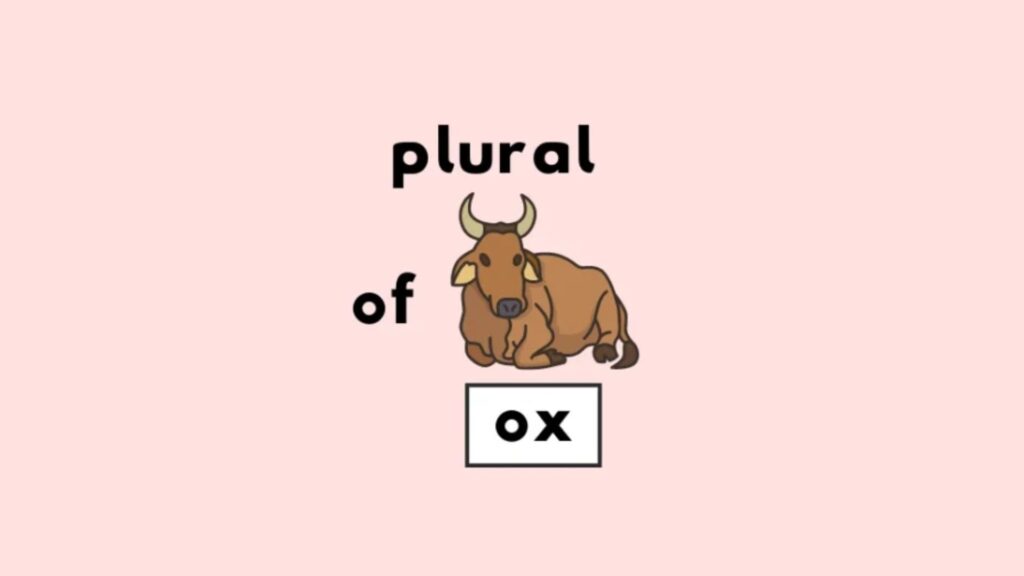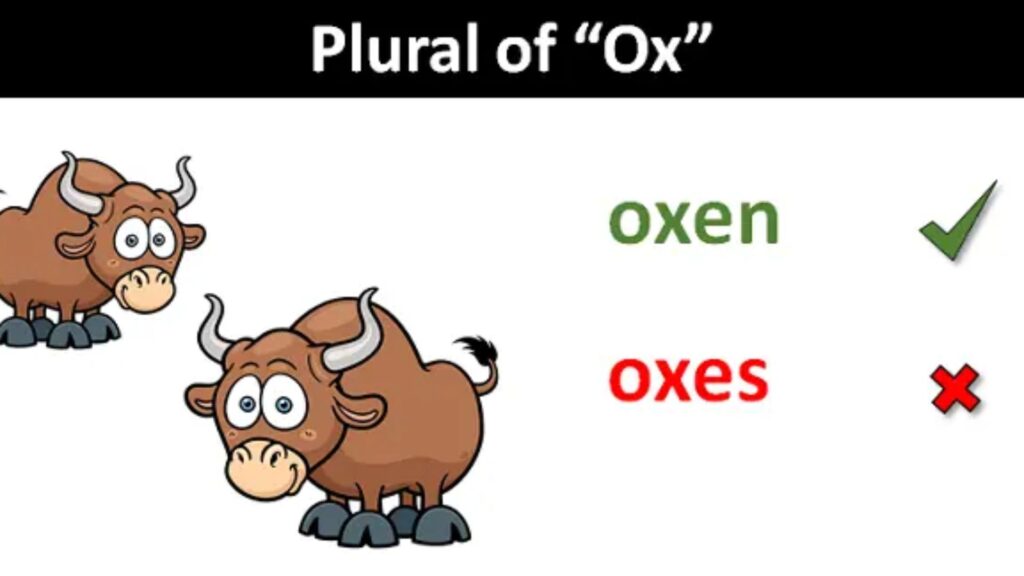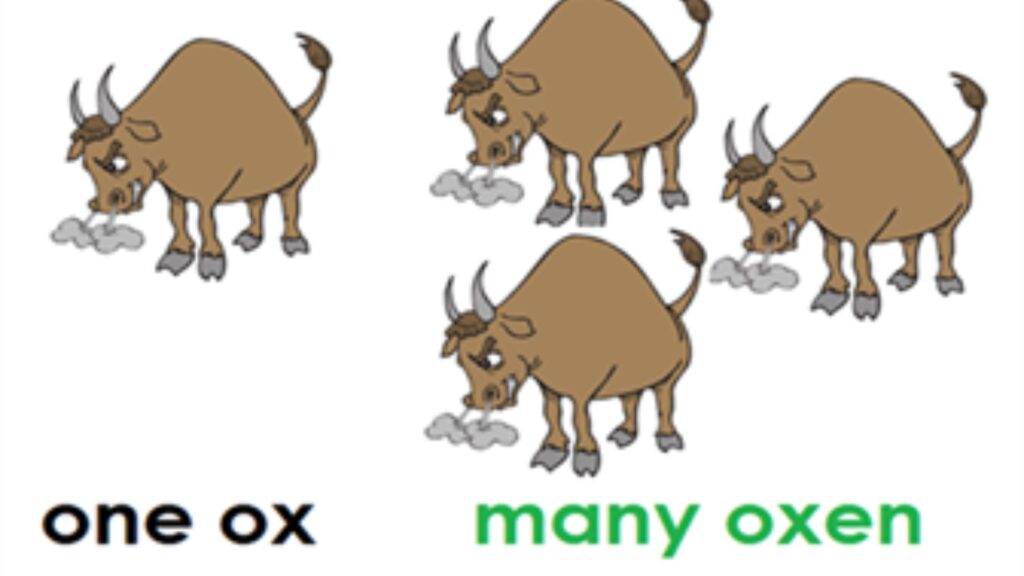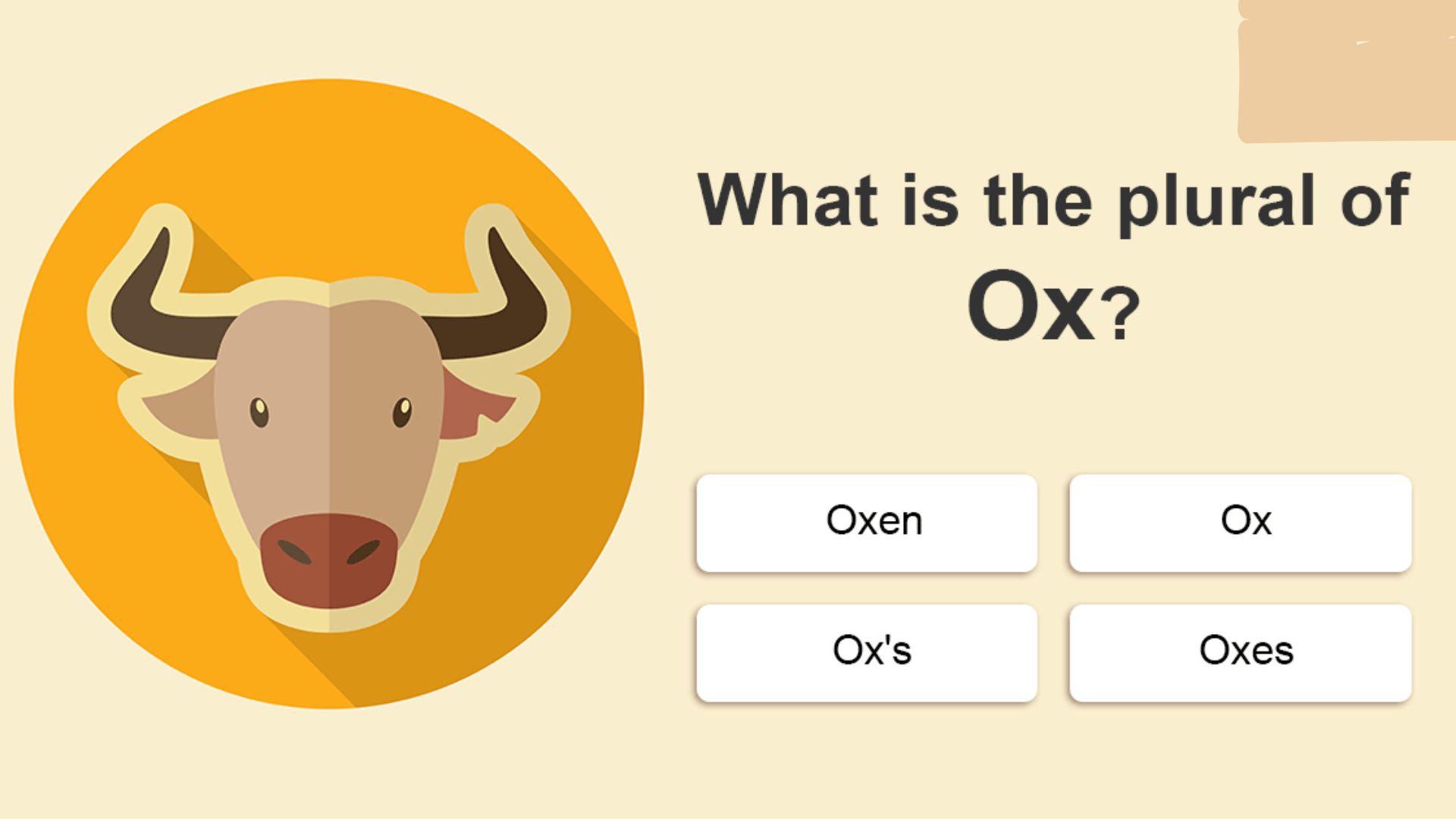Plural of Ox
When you think of oxen plowing fields or pulling carts, you’re picturing animals that have been part of human history for thousands of years. But if you’ve ever paused and wondered, Is it oxes or oxen? you’re not alone.
Let’s unpack this curious word. By the end of this guide, you’ll not only know the correct plural of ox, but you’ll also understand the grammar behind it, see how it’s used in real life, and even learn a bit about the animal itself.
The Correct Plural of “Ox” Is “Oxen”

Plural of Ox
Let’s get straight to it. The correct plural form of ox is oxen not oxes.
This makes ox one of the few remaining words in English that follow an old pluralization pattern using -en rather than the standard -s or -es suffix.
📘 Example:
- ✅ Correct: The farmer led a team of oxen through the muddy field.
- ❌ Incorrect: The farmer led a team of oxes.
So, why oxen and not oxes? For that, we need to head back in time.
A Quick Look at the Word Origin
The word ox comes from Old English “oxa”, and the plural of ox “oxan” later became oxen in Middle English. This pattern was once more common words like children and brethren also come from that era.
Most English nouns today form their plurals with -s (like dogs) or -es (like boxes), which are considered regular plural nouns. But ox isn’t one of them. It’s what grammar nerds call an irregular plural noun.
Is “Oxes” Ever Correct?
Nope. Never. Don’t use it even if it feels logical based on modern rules.
“Oxes” is a grammatical error in standard English. It may pop up in informal speech or language-learning contexts, but it’s always wrong in proper usage.
Use in Real-World English: Email Example
Let’s say you’re sending a follow-up to a colleague in agriculture:
Subject: Request for Updated Inventory of Livestock
Hi Sandra,
Hope your week’s going well! Quick question can you send over the final count of livestock for the end-of-month report? Specifically, we’re looking to verify the number of cows, bulls, and oxen on the West Farm.
Thanks in advance!
Best,
Kevin
Notice how oxen fits in naturally alongside other cattle terms like cows and bulls. No one says “oxes” in professional or educational settings.
What Is an Ox, Exactly?
An ox is not a separate species of animal. It’s usually a castrated male from the Bos taurus species, trained to work as a draught animal.
In simpler terms, an ox is a labour animal strong, patient, and often part of a yoke of oxen used for pulling plows or carts.
- Species: Bos taurus
- Family: Bovidae
- Subfamily: Bovinae
- Type: Even-toed ungulate (yes, that’s a thing)
- Digestive system: Ruminant (multi-stomach grazer)
Ox vs. Bull vs. Steer What’s the Difference?
This is where it gets interesting. All three terms refer to male cattle, but their purposes differ:
| Term | Castrated? | Used for? |
|---|---|---|
| Bull | ❌ No | Breeding |
| Steer | ✅ Yes | Meat production |
| Ox | ✅ Yes | Labor (pulling loads) |
So, when someone asks the difference between an ox and a bull, just remember: bulls are for reproduction, while oxen are trained for hard work.
“Yoke” or “Team” of Oxen?
You might hear both phrases yoke of oxen and team of oxen used interchangeably. Technically, a “yoke” refers to two oxen harnessed together. A “team” can refer to a larger group.
- ✅ The teamster led a yoke of oxen across the field.
- ✅ They drove a team of eight oxen through the mountain pass.
In places like North America or Europe, teamsters or bullockies often worked with multiple yokes of oxen to transport goods or till soil.
How to Remember the Correct Plural of Ox: Language Learning Tips

If you’re a language learner, memorizing irregular nouns can feel like playing grammatical Whac-A-Mole. Here are a few handy tips:
🧠 Use Flashcards
Make a grammar flashcard:
Front: Plural of ox
Back: Oxen ❌ Not oxes!
🧠 Use Rhyming Mnemonics
“Oxen are workin’, not oxes that are vexin’.”
🧠 Group with Other -en Words
Words like:
- Children
- Brethren
These are rare but memorable examples of plural form -en endings. Group them together in your mind to reinforce the rule.
Pluralization in English: Why It’s Weird Sometimes
Plural of Ox
English has a reputation for having more exceptions than rules, especially with plural nouns. That’s partly because it evolved from many linguistic sources: Old English, Norse, Latin, French, and beyond.
The irregular nouns examples like:
- Mouse → Mice
- Goose → Geese
- Ox → Oxen
…show that noun morphology in English doesn’t always follow predictable patterns.
Common Mistakes: Oxen Definition Confusion

Here are a few grammar mistakes English learners and even native speakers make:
- ❌ I saw three oxes at the petting zoo.
- ✅ I saw three oxen at the petting zoo.
- ❌ That oxen is huge!
- ✅ That ox is huge!
Remember: oxen is plural of ox. Use ox when you’re talking about one.
Why Does This Matter?
Whether you’re writing a novel, studying for a language exam, or sending a livestock report, using the correct plural matters. Grammar mistakes especially on uncommon but visible words like oxen can chip away at your credibility.
Final Thoughts: Oxen in Farming, Language, and Beyond
In traditional farming and animal domestication, oxen have been indispensable. They’ve hauled timber, cleared land, and supported economies long before tractors existed.
From a language standpoint, the word oxen reminds us of how English preserves fragments of the past. It’s a little grammatical time capsule.
So next time you need to pluralize ox, remember: it’s not modern, but it’s correct. Oxen, not oxes.
✅ Quick Recap
- Correct plural of ox? Oxen
- “Oxes” is always incorrect
- Oxen = Castrated, trained cattle used for labor
- Origin: Old English “oxa” → Middle English “oxen”
- Use in context: team/yoke of oxen
- Pro tip: Learn it with other irregular nouns examples

